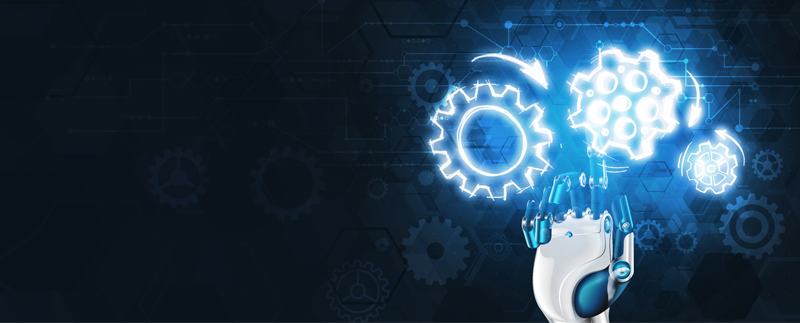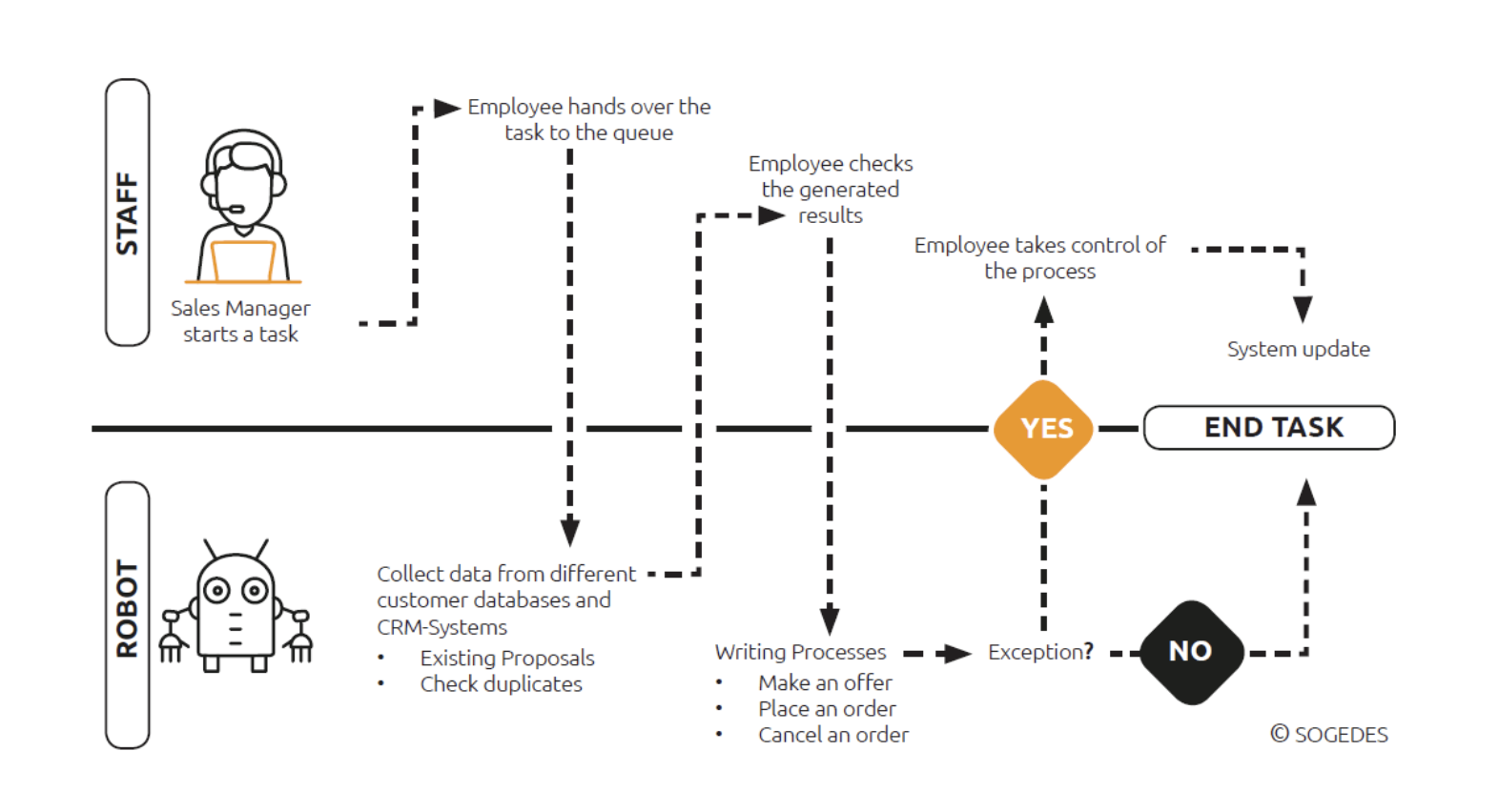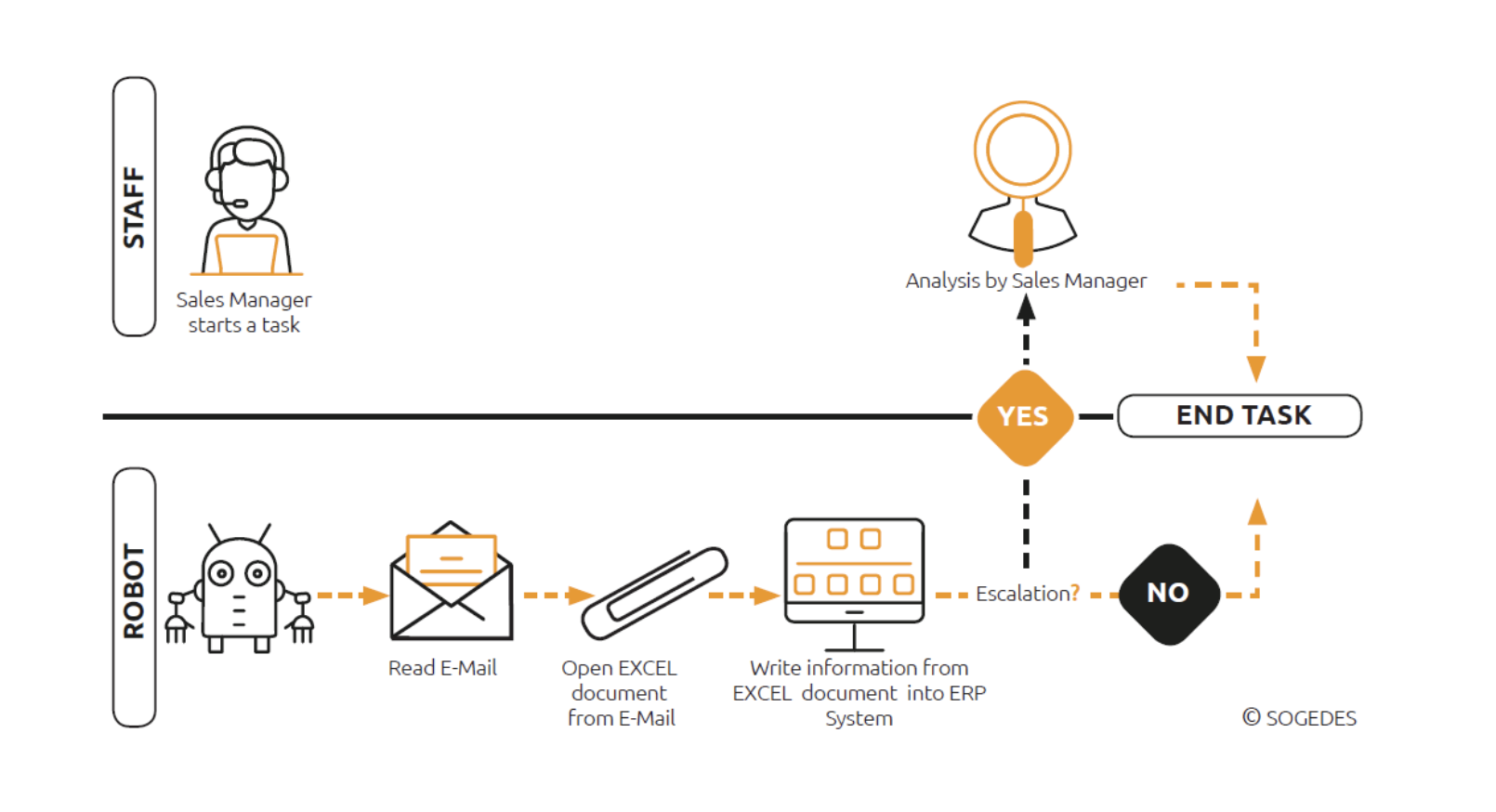Delivering an experience that associates a brand with superior customer experience is what organizations always aim to achieve. Organizations aim to proactively implement transformations such as automation to boost customer retention and increase brand loyalty. The emotional quotient and critical human interventions that are needed to keep delivering superior customer experience in the front-office is a key consideration for automation. This is where attended process automation comes into play. Mixed with human interaction, it is a great tool for building long-lasting relationships and freeing employees from repetitive and tedious tasks.
For effective delivery of an end-to-end business solution leveraging next-gen technologies, attended process automation should be combined with artificial intelligence software and machine learning capabilities. It can handle high-volume repetitive tasks in a streamlined and effective manner, that otherwise would take humans a long time to complete. Such tasks include: queries, calculations, maintenance of records and transactions.
What is attended process automation?
A type of Robotic Process Automation (RPA), it is carried out at the workstation level. Also, termed as desktop automation, assisted automation or software assistants, this form of automation involves a software robot that carries out definite actions while complying with business logic. Humans control the entire process and govern when the transactions should progress.
During the process, the bot reads the contents of the applications, locates fields that contain the assigned data and performs the tasks as per the rules assigned at the start. It can also verify data and other programmed activities to be translated into specific actions.
While performing these operations, the robot can return control to the person at the workstation if necessary, i.e. if the last action before closure requires decision-making from a human. For example, in the banking and financial services industry, during inbound calls, tasks are initiated by an agent, then transferred to a bot to furnish the necessary details before it is handed back to the customer care executive.
The difference between attended and unattended process automation
Unlike unattended process automation where automation takes place on servers without the need for human intervention, attended process automation software bots are deployed on workstation applications.
This standalone robot uses applications to retrieve information, applies configured rule engines to the information, and executes the process through user interfaces or application program interfaces.
For example, in a sales context, a robot analyzes emails, retrieves information and has them keyed into the database:
Attended process automation has a strong role to play in front end and can invoke unattended automation for the back end activities of a contact center. It assigns smart desktop robots to mimic human activities and runs as a background application to offer the best insights at the exact moments when they are needed.
How does it help agents?
With this method of automation, software assistants can help agents get work done faster and with fewer errors. While they focus on processes that require strong decision-making skills, the repetitive chunks of work can be automated.
It provides guidance and automation wizards built within desktop applications to complete the work. During specific steps, the bot takes over to complete certain portions of work before handing over control to the human. It allows agents to attend to interesting and valuable work while empowering them to make decisions in real-time. They can also prompt agents during transactions if processes have been changed without the need for external training.

What it does for supervisors?
Using this tool, supervisors can oversee the combined actions of the human and robotic workforce. Based on this data, they can leverage the strengths of each to get more work done in an effective way.
As this improves the overall productivity and precision of work, supervisors can make more time for troubleshooting services, coaching, and decision-making capabilities.
What do customers gain?
As work becomes quicker and error-free, customer experience continues to improve. This allows organizations to ponder over new ways to meet the growing expectations of customers while using the maximum potential of both humans and process automation tools.

Benefits of process automation
The average front-office employee spends 80% of their day on repetitive processes that include calculations or processing orders to support customers. Along with being time-consuming, it knocks down the morale and motivation to continue the monotony daily. Also reduces productivity which can be better spent on up-selling and cross-selling human interactions.
But, with process automation, all of it changes, as it automates manual desktop tasks that are routine, rule-based or event-driven and optimizes all business processes.
High customer satisfaction
It meets the service-level agreement requirement by 100% as customer service executives can focus on customers and service instead of filling in forms and other time-consuming activities.
Improved productivity and accuracy
Bots can complete tasks five times faster than people while working tirelessly 24X7. This allows teams to take in more work and venture into problem-solving processes while improving productivity. With assured 100% accuracy and policy compliance, clerical errors are eliminated.
Increased ROI
Operating costs are significantly reduced by using robotic workforce. According to the National Association of Software and Services Companies, RPA can reduce operation costs by up to 65 percent. Therefore, it eradicates the need for unnecessary expenses by leveraging IT assets with in-house workflows.
Improved resource utilization
While systems run the process automation tool, employees can be used in optimal ways that can add value to the business. Operations can also be rapidly scaled based on the demand to ensure consistency in service.

Process automation and artificial intelligence
Robots, in general, tend to learn as they run processes. They grasp patterns and behaviors on the basis of user activity. But with process automation, whether attended or unattended, bots can only perform actions that they are trained to do; due to the lack of self-learning abilities. But this depends on the level of logic the developer included (for handling situations based on past scenarios) while setting up the bot.
When process automation solutions are combined with cognitive technologies (based on artificial intelligence and machine learning), it increases the competency of the bot. This can help deliver smarter automation while reaching maximum potential. This means that bots will be able to learn and take decisions, and adapt to learn outside the initial environment. Due to this, the learning process can take place at accelerated rates that can increase both productivity and creativity for organizations.
Furthermore, the AI capabilities can be extended using natural language processing, reasoning, and prediction to turn data into useful information.
Conclusion
Be it attended or unattended, all process automation involves human interaction, but the bigger challenge that many organizations face, is to decide what to automate. As customers consume newer channels of engagement, the question of whether the technology should be a long-term investment comes about. With attended process automation, it can uncover opportunities to optimize the processes in real-time.
As attended RPA assists a human at the workstation and saves valuable employees time, who wouldn’t want a robot helper all the time?
- Categories
- Tags
- Archives
Subscribe For Updates
Get the Servion Blog updates in your inbox.













